Back in November I went to Venice and saw Damien Hurst’s exhibition ‘Treasures from the Wreck of the Unbelievable’. It was one of my favourite parts of the trip – the sheer amount of work was awe inspiring, and I loved the theme and idea behind the whole exhibition.
Some of my favourite pieces from the exhibition:
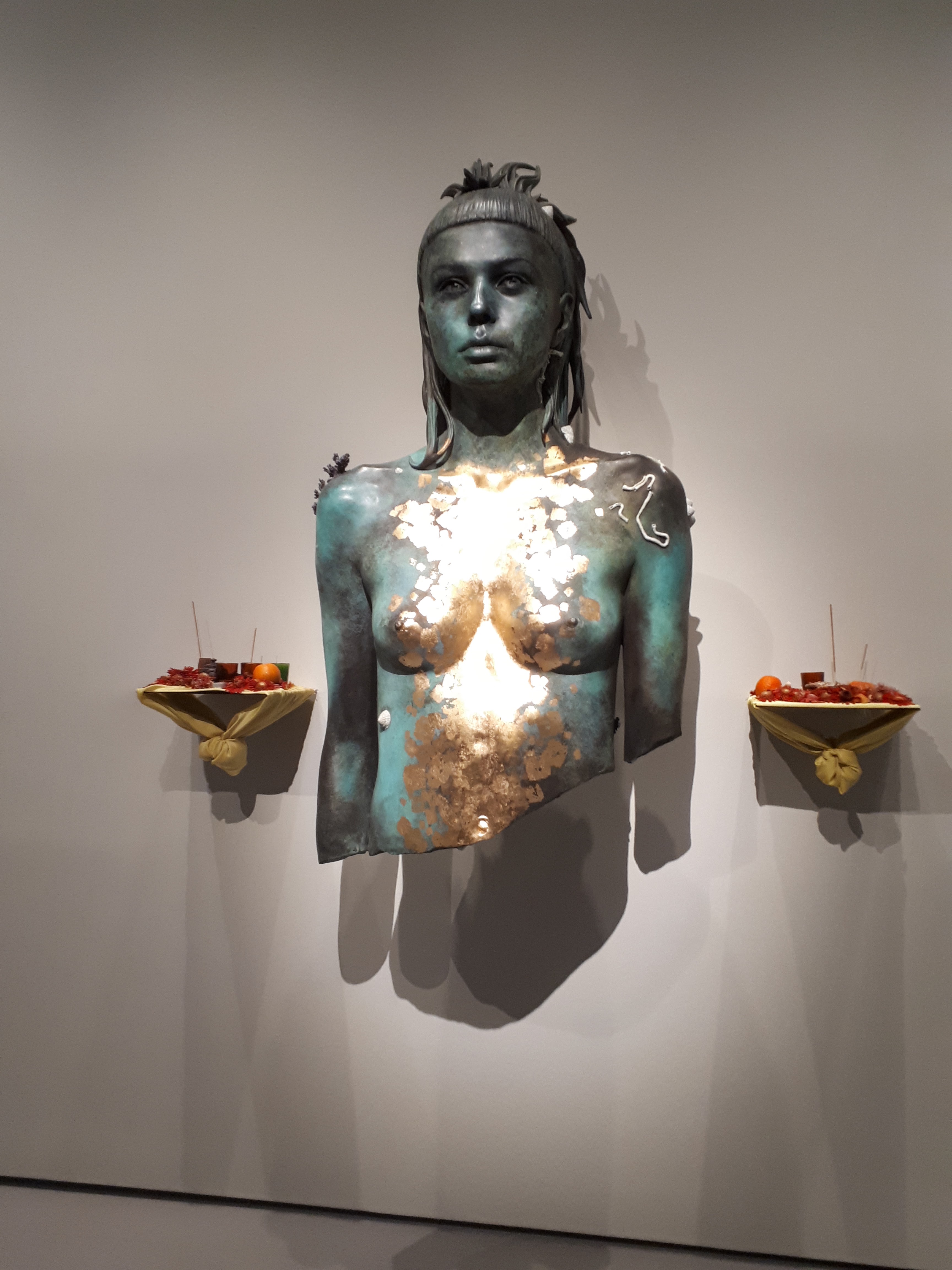
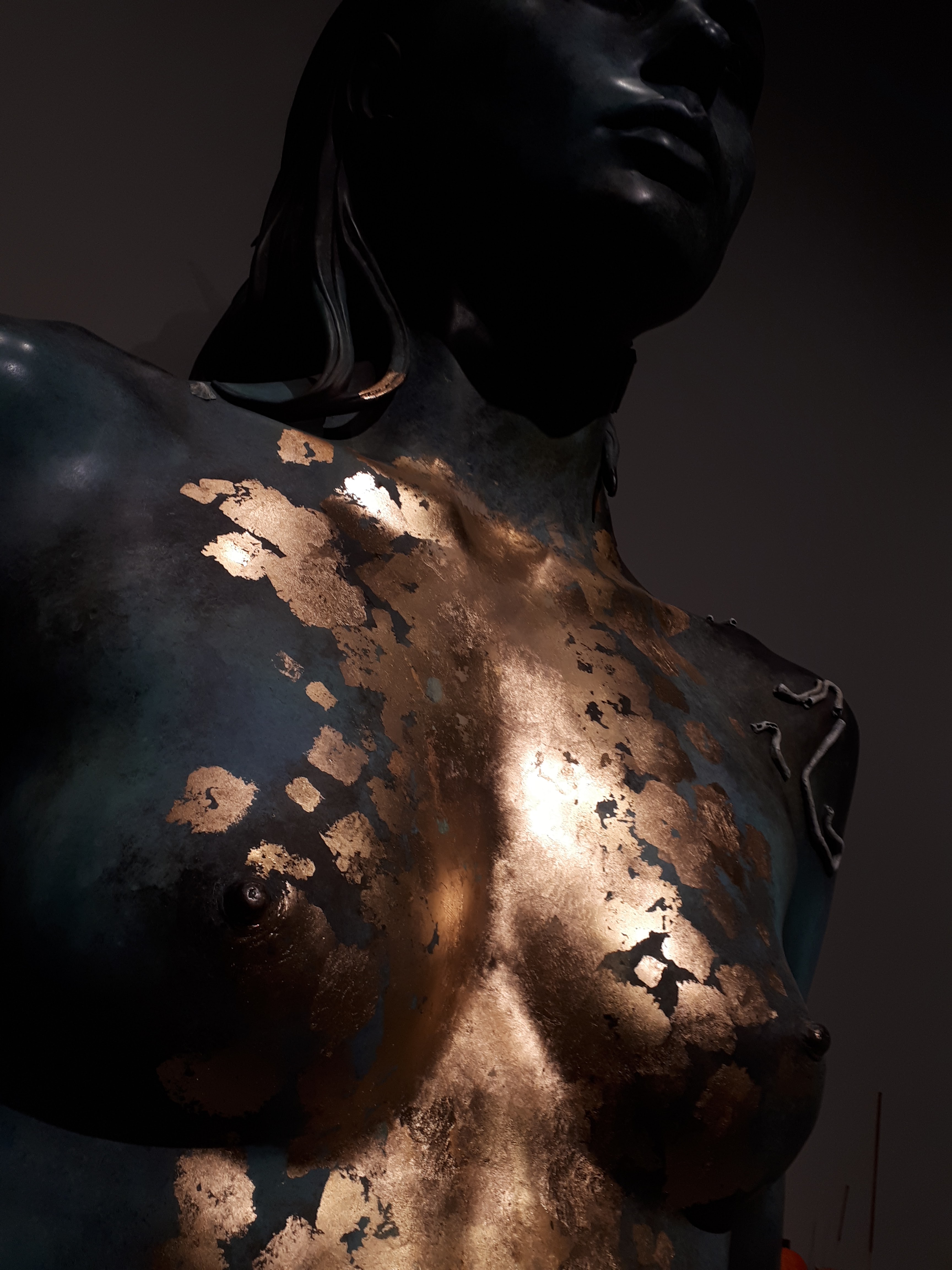

This piece entitled ‘Aspect of Katie Ishtar Yo-landi’ stood out to me. It is a bust of a ‘Mesopotamian Goddess’, made of bronze and gold leaf. At first it’s the gold leaf and the light playing on it that draws you to the piece – but it’s also the sense of prestige as well as the facial expression of the goddess. The cut off of the sculpture at the bottom really sets it off, the figure sitting proud despite being part of a ‘wreckage’.
Throughout the exhibition, and starting with this piece, some of my favourite parts are the photographs of the sculptures underwater, which are put in light boxes. Placing them in the environment that they were seemingly from, yet in reality placing them there entirely for the purpose of this fabricated wreckage story, is a very interesting concept. The sculptures sit in the underwater world comfortably, the effects of the water playing with the man made corals beautifully. The divers photographing the pieces are like actors in this whole charade, ‘finding’ these sculptures and saving them from a life unseen.
I love to make work about natural process and the atmosphere, and seeing the interplay between underwater nature and the man made is part of that; the underwater photographs are of such a high quality that the smallest specks of ocean life can be drawn out, the colours of the sculptures merging into the blues and greens of the ocean. In my opinion, these photos are the triumph of the exhibition.
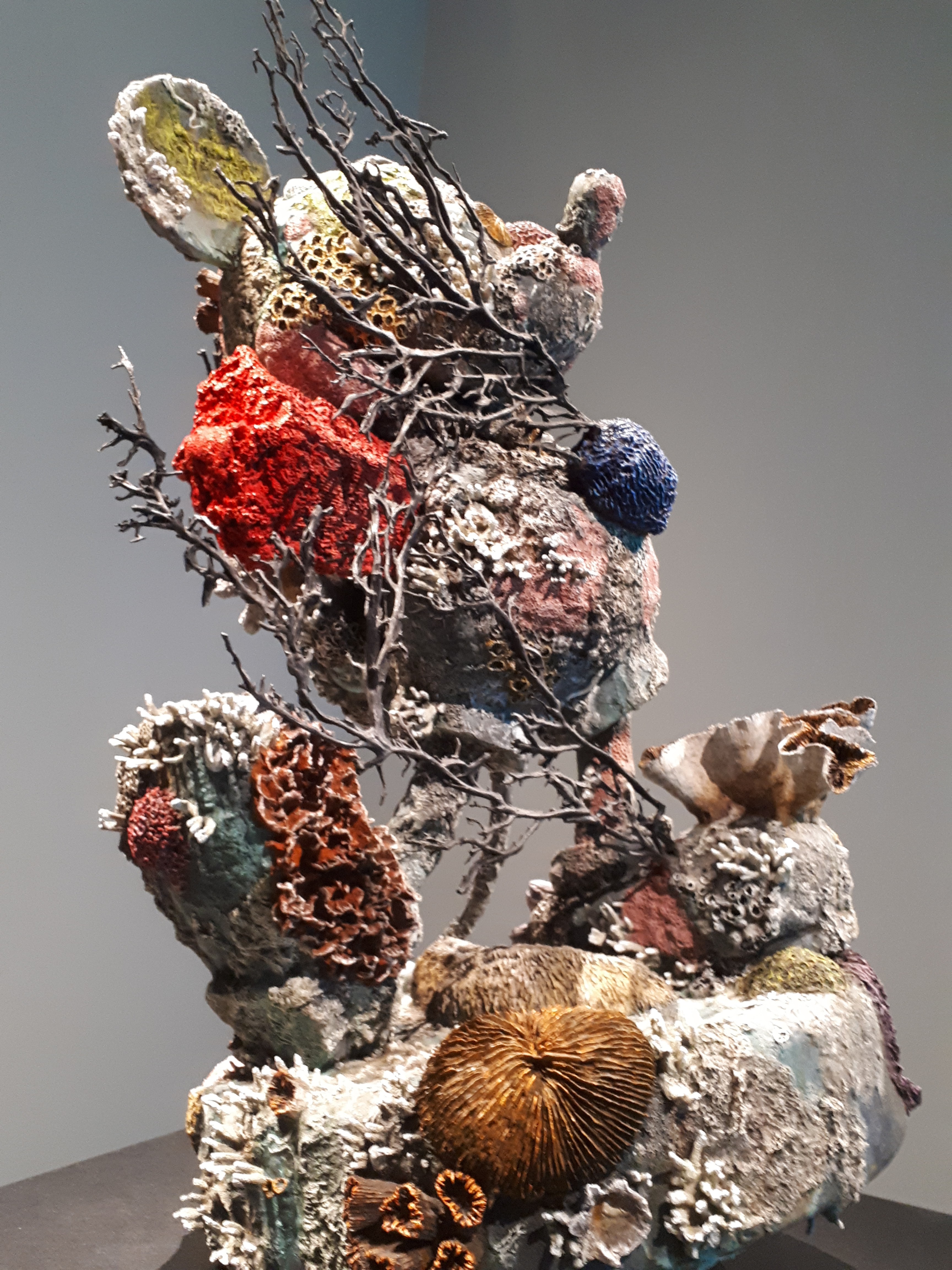
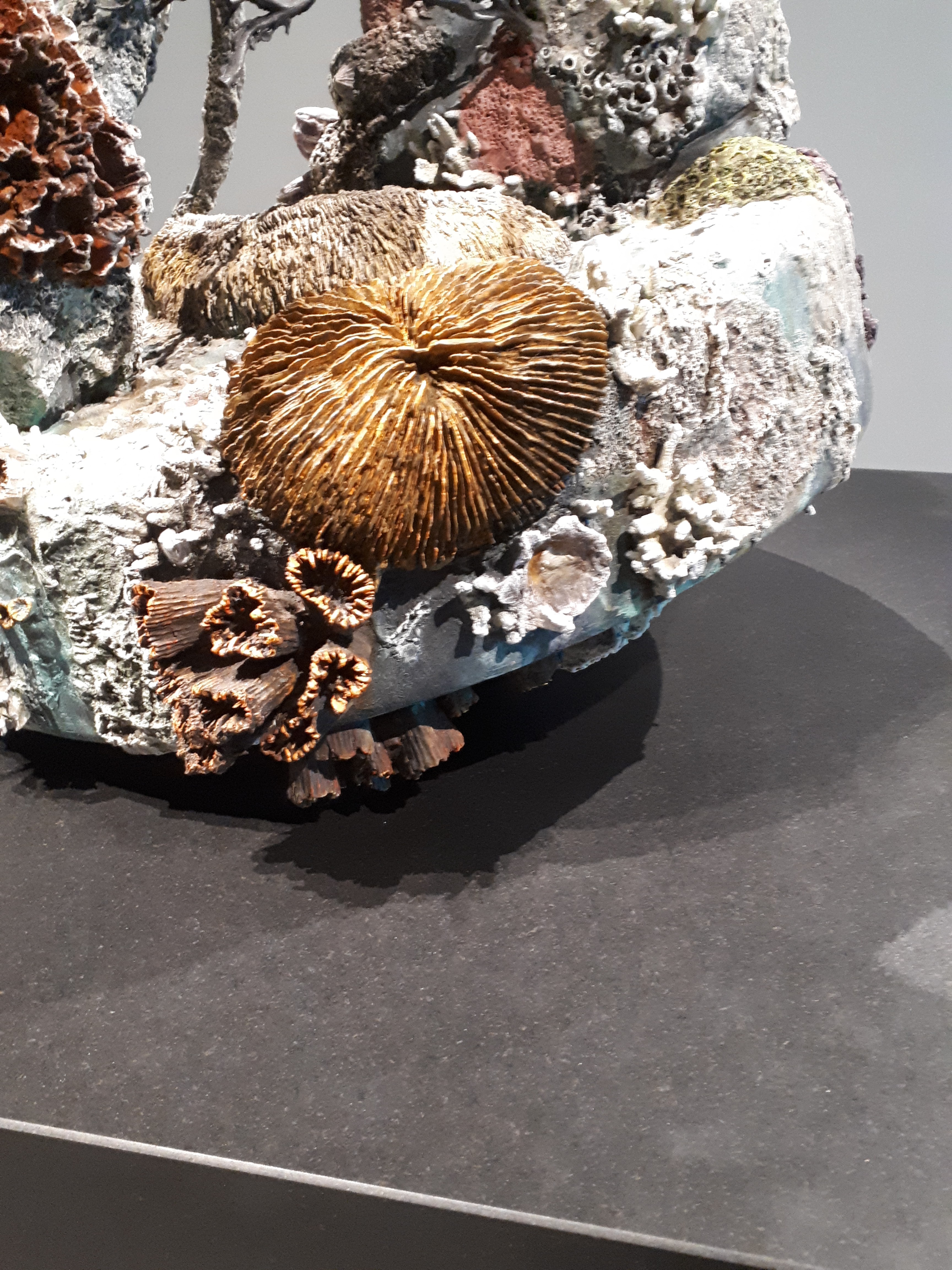

This was the first anachronistic piece I came across in the exhibition (in the Palazzo Grassi), and seeing a familiar character covered in coral and looking ‘aged’ made me as a viewer feel like part of the era from which this shipwreck came. Damien Hirst creates a mockery of his own storytelling by including such characters, blurring the lines between truth and lies.
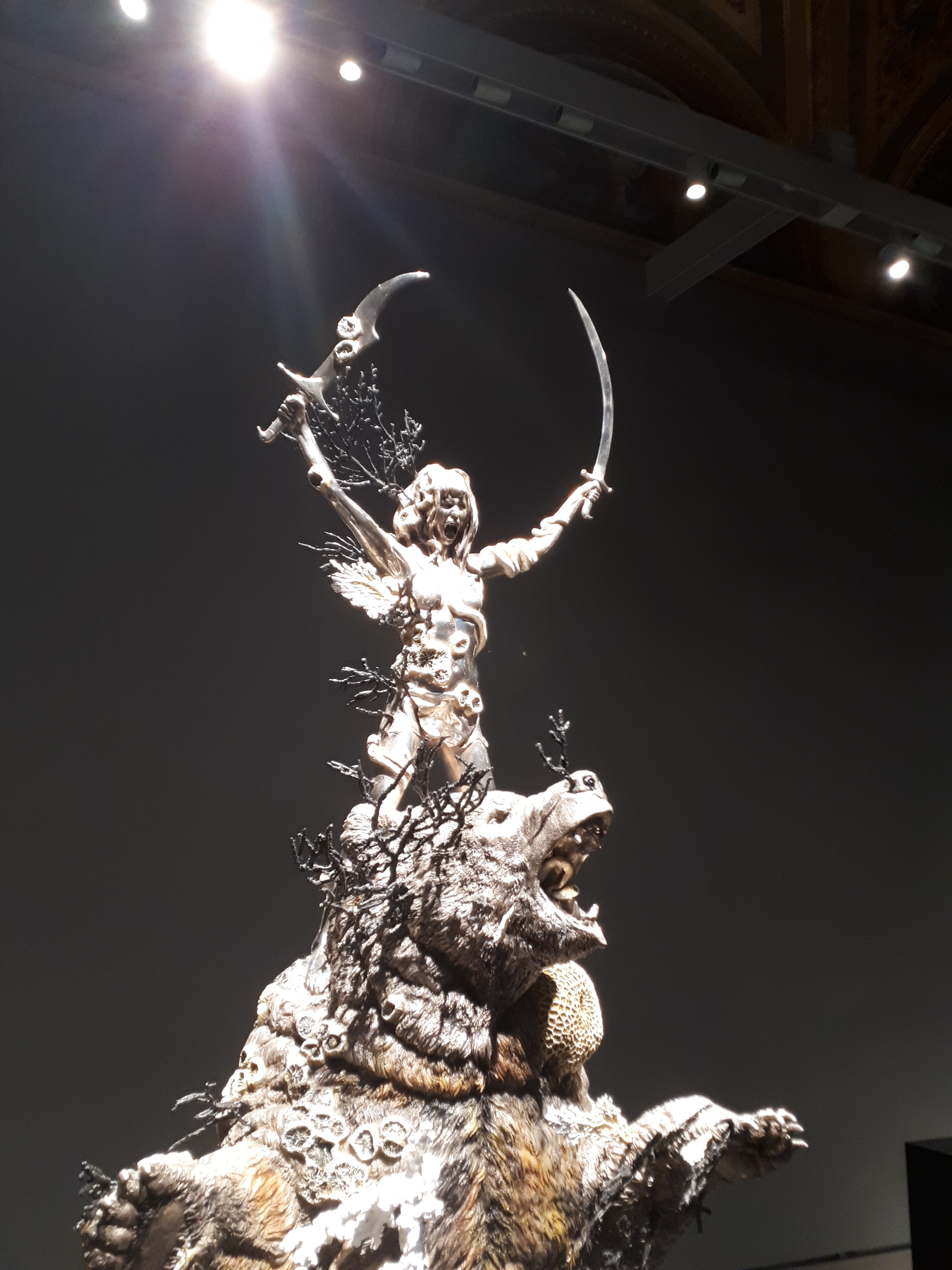
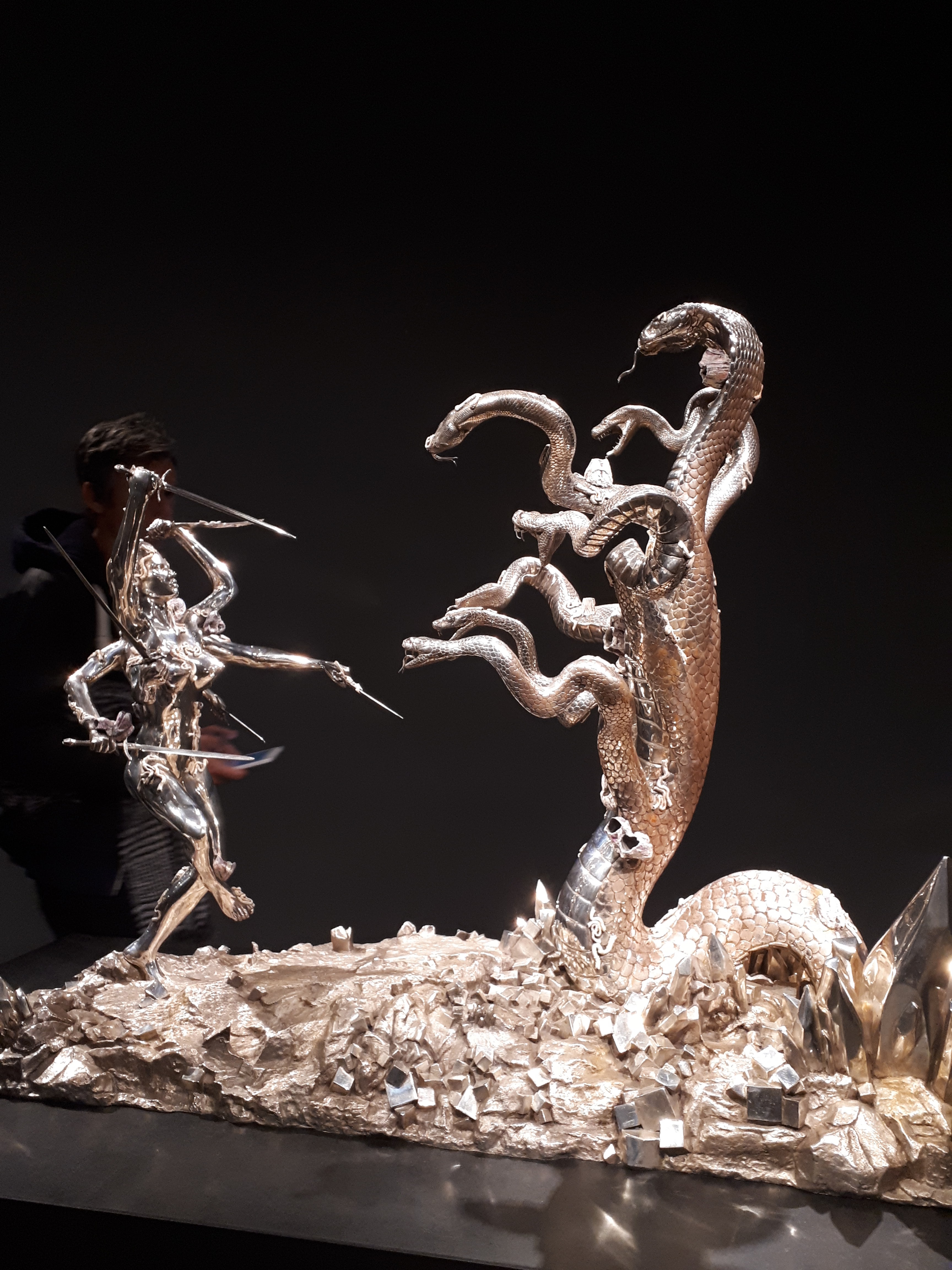

These small silver sculptures were different to everything I’d seen at the exhibition so far, as the majority of pieces had been bronze. These had a delicacy and shine which really appealed to me, and the fact that they were small made them seem like precious objects.
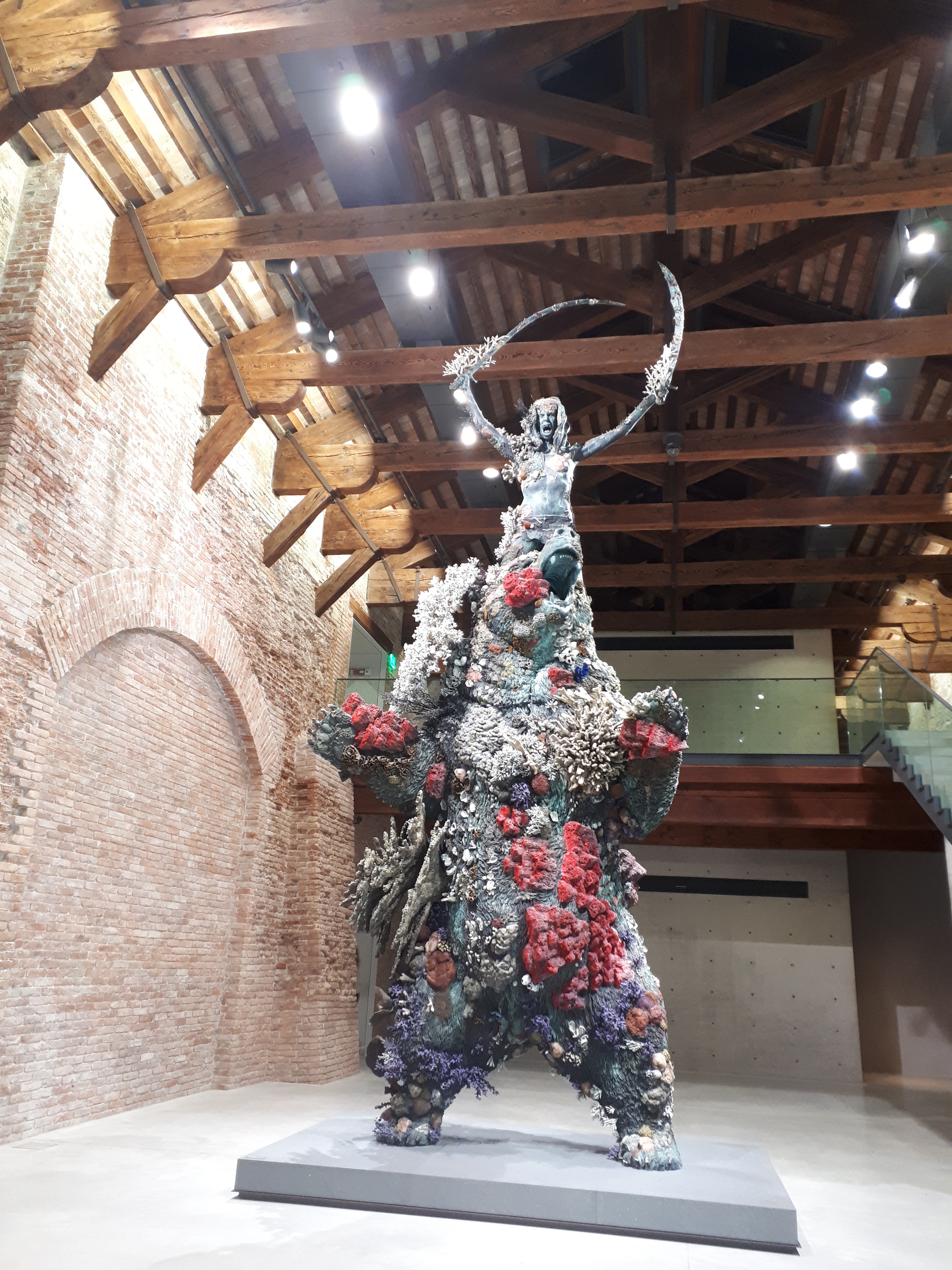
This is a huge model of the smaller silver version. The continuity between the silver piece (in the Palazzo Grassi) and this large bronze sculpture (in the Punta Della Dogana) not only bridges the two locations of the exhibition, but enhances the idea of this collection being linked, of these ‘age old sculptures’ being crafted using a meticulous process that involves scaling up or reducing down.
I’ve been thinking of shifting the scale within in my own work, so seeing huge works against tiny crafted artefacts all really inspired me – details being crafted on small and big artworks alike.
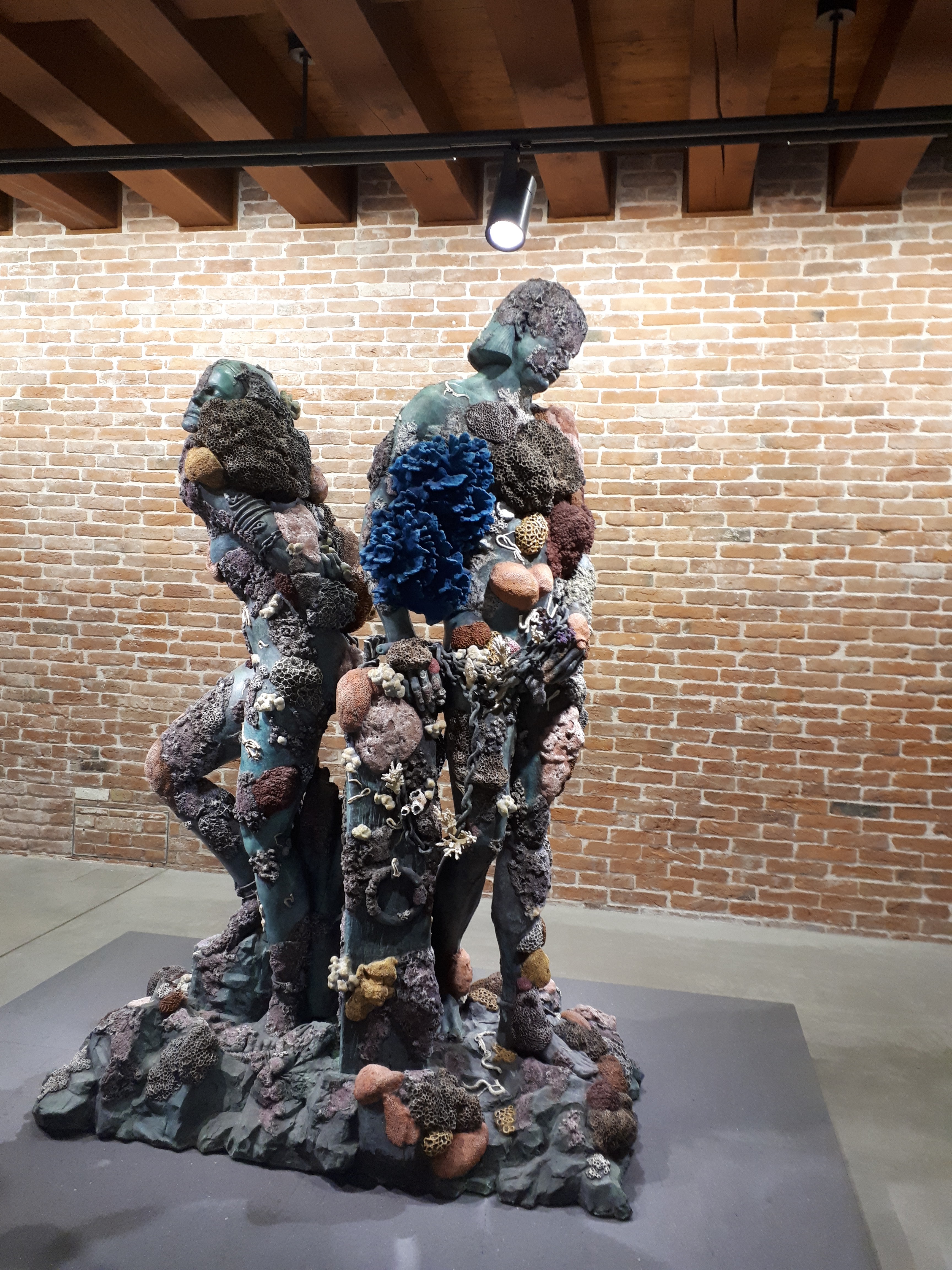
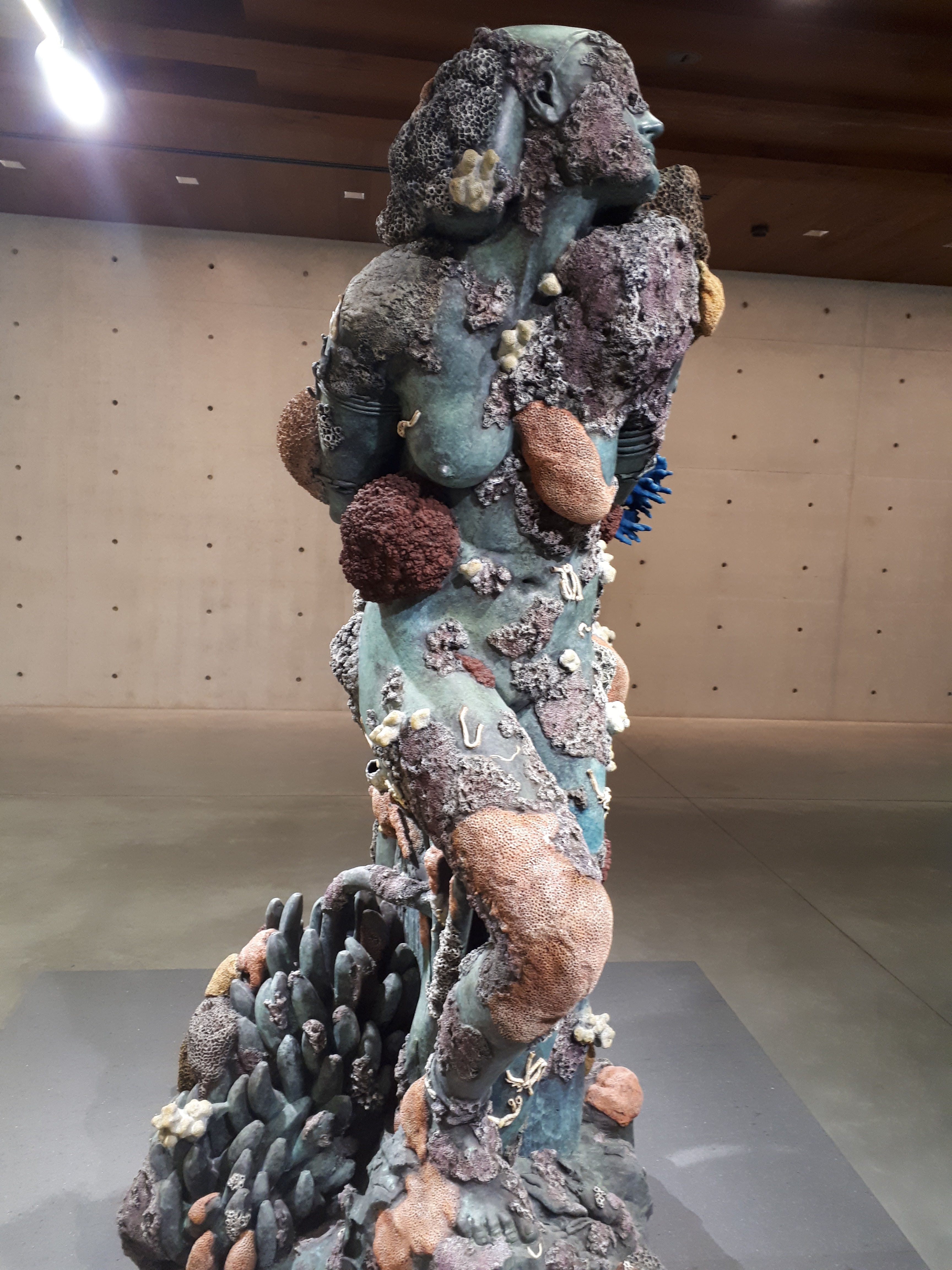
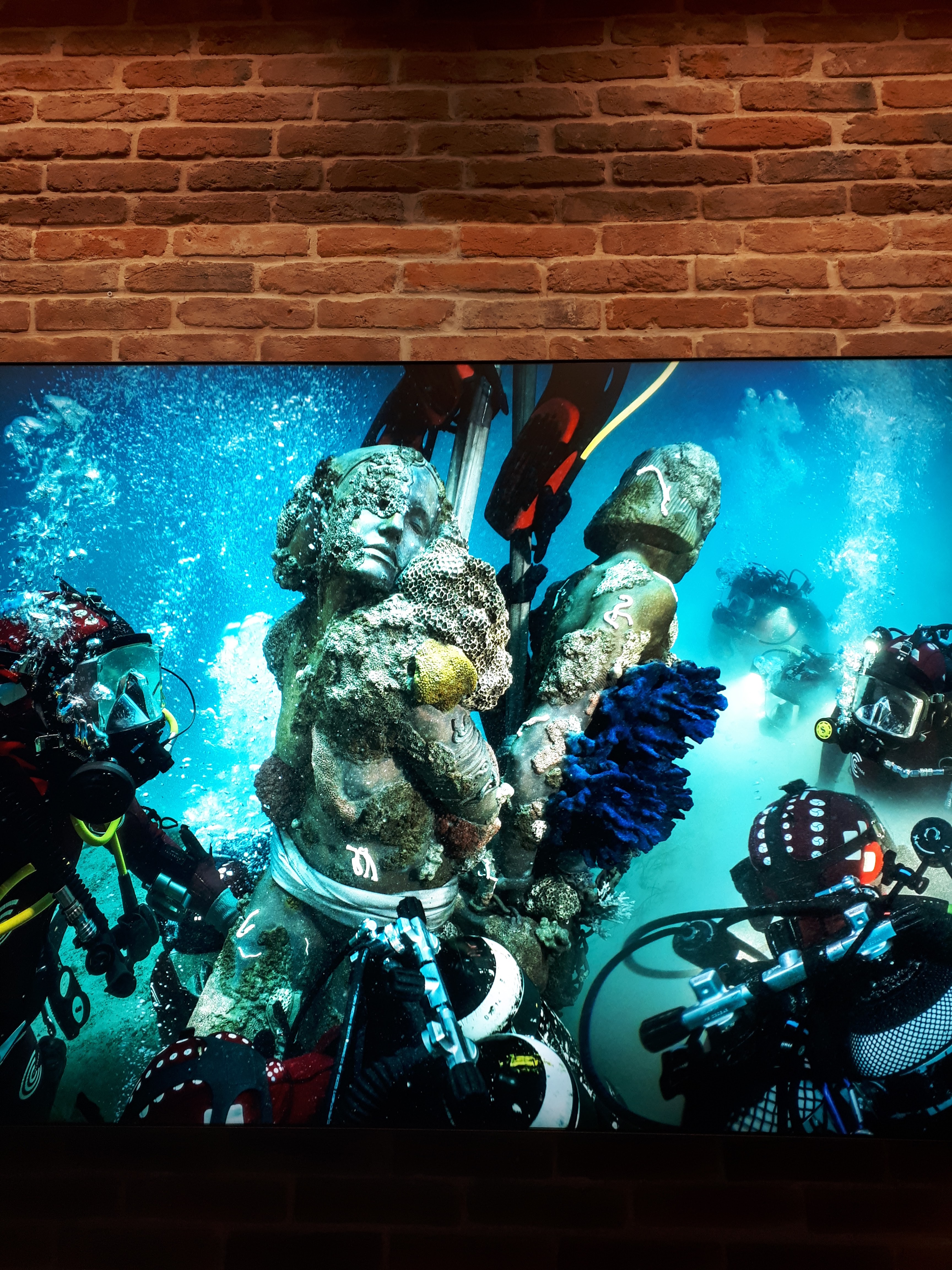
While this sculpture wasn’t one of my immediate favourites, the accompanying piece ‘Sunken Children of a Dead King’ really appealed to me. The particular angle of the sculpture shows the face with a pained expression, and the fact that it’s literally tied up enhances the fact that the statue is of bound slaves who are experiencing suffering. Being surrounded by divers seems to ‘victimise’ the statue even further.
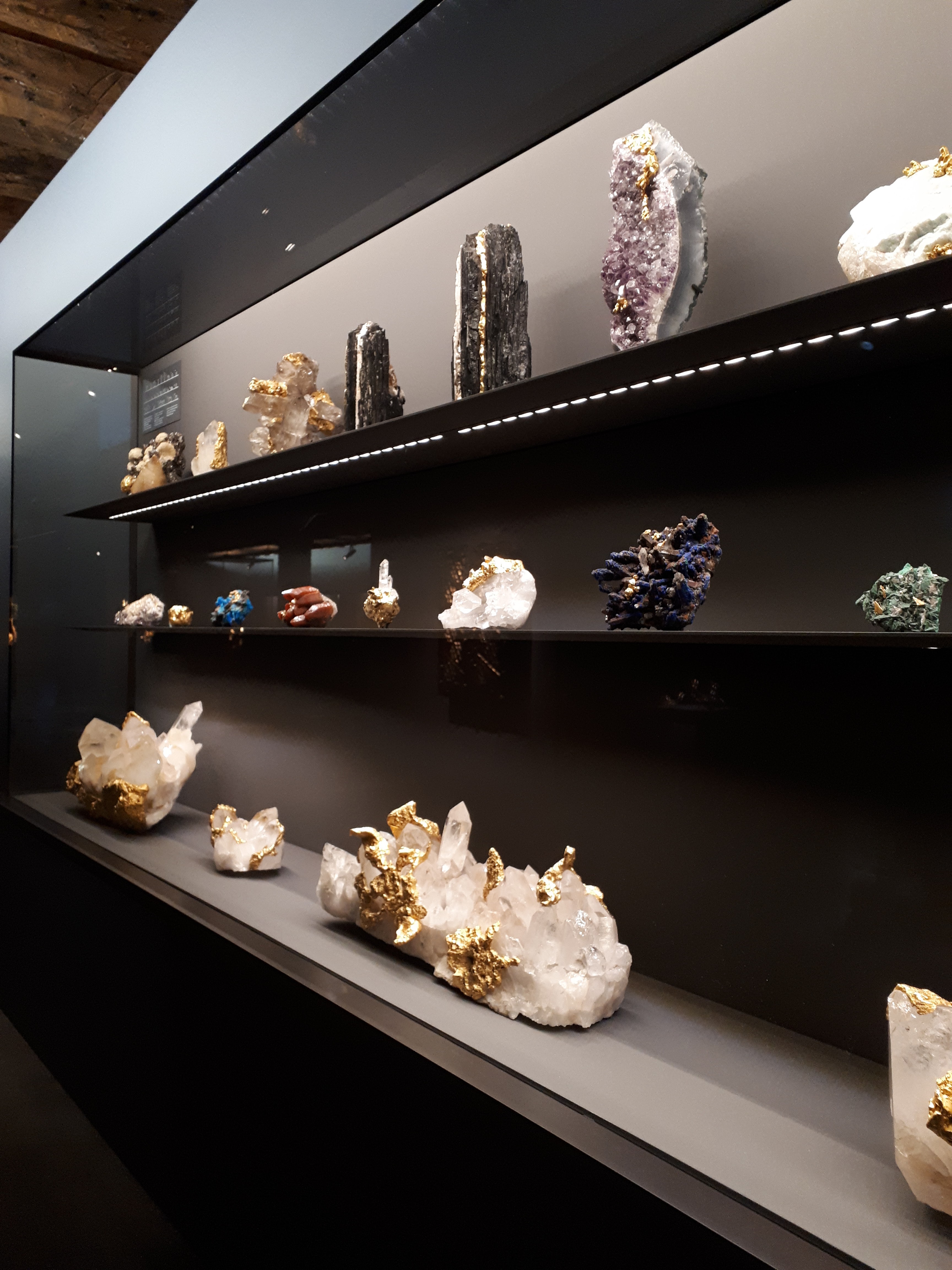
I really love small detailed pieces of artwork, and have always loved the beauty of crystals and minerals, so these pieces really drew my attention. The crystals on their own have a distinct beauty, but the smattering of gold really adds something. As with the bust of Katie Ishtar, the gold reflects the light and has a sort of luminescence, with the appearance of it having ‘grown’ onto the crystal making it seem like it has indeed come from beneath the seas. These were the first pieces that fitted the standard stereotypical definition of ‘treasures’ in my opinion, which is perhaps why they seemed so special – even standing alongside the huge bronze sculptures.


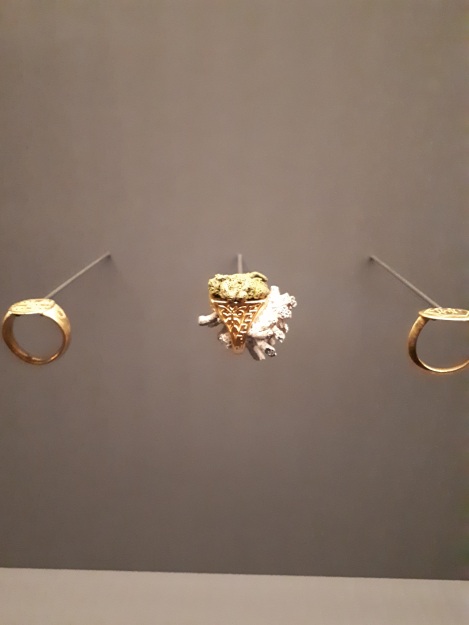
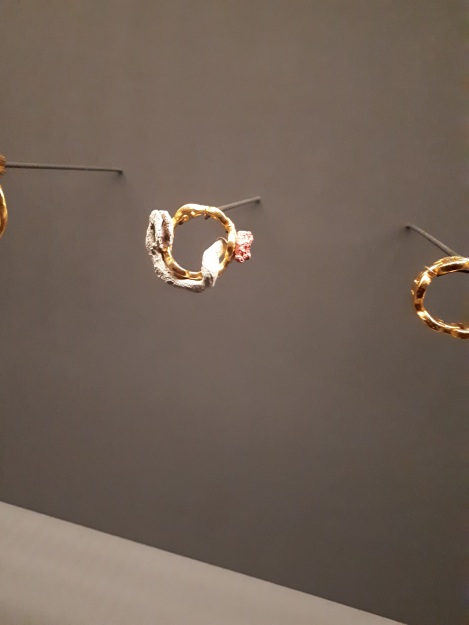
I feel the same with the above pieces – jewellery from the wreck of the ‘Unbelievable’. I mayn’t have been so drawn to the jewellery if it was on its own, but the contrast each one has with the little pieces of ‘coral’ attached is really appealing. Again, the way they are placed together looks like natural growth of coral onto the jewellery.
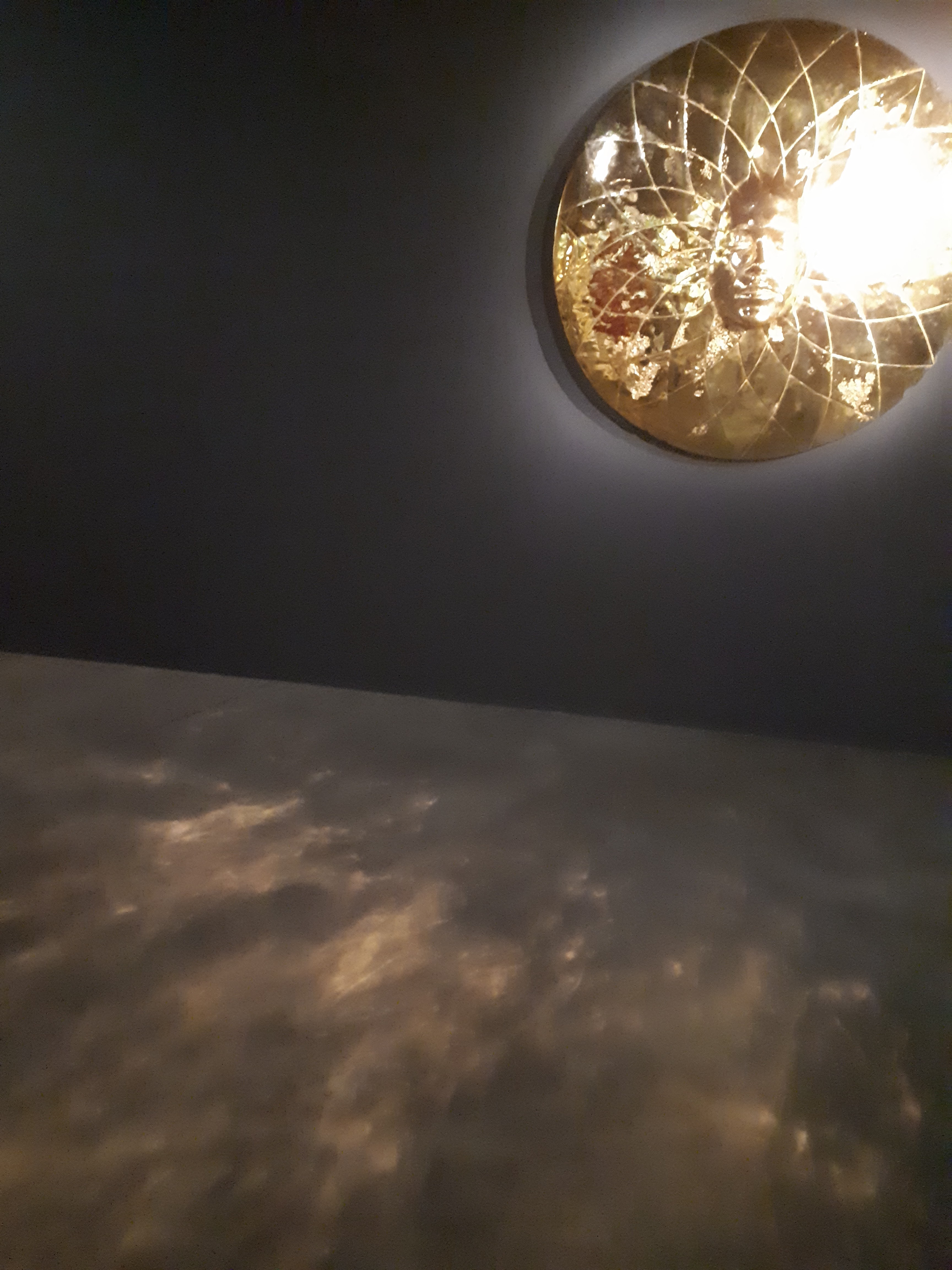
I wanted to capture the reflection of light off the gold in this photograph, as it really seemed like something special. Here is an excerpt from the description of this work, which I found interesting:
“This solar disc presents a human face emerging from a harmonic low relief pattern of intersecting rays. Sun worship is reflective of the universal human need to comprehend the mysteries of life, death and beyond.
“For the ancient Egyptians for example, the rising of the sun in the morning provided a model of daily regeneration and suggested their own resurrection after death”.
Recently my work has revolved around atmosphere and light, however I’ve not yet looked into the context and meaning of light to different cultures and historical ages. So researching this piece and the origins of sun worship is something I’m definitely going to do. The light reflecting off the piece is almost part of the work, extending it beyond the bounds of the disc shape and endowing it with some kind of shining glory.

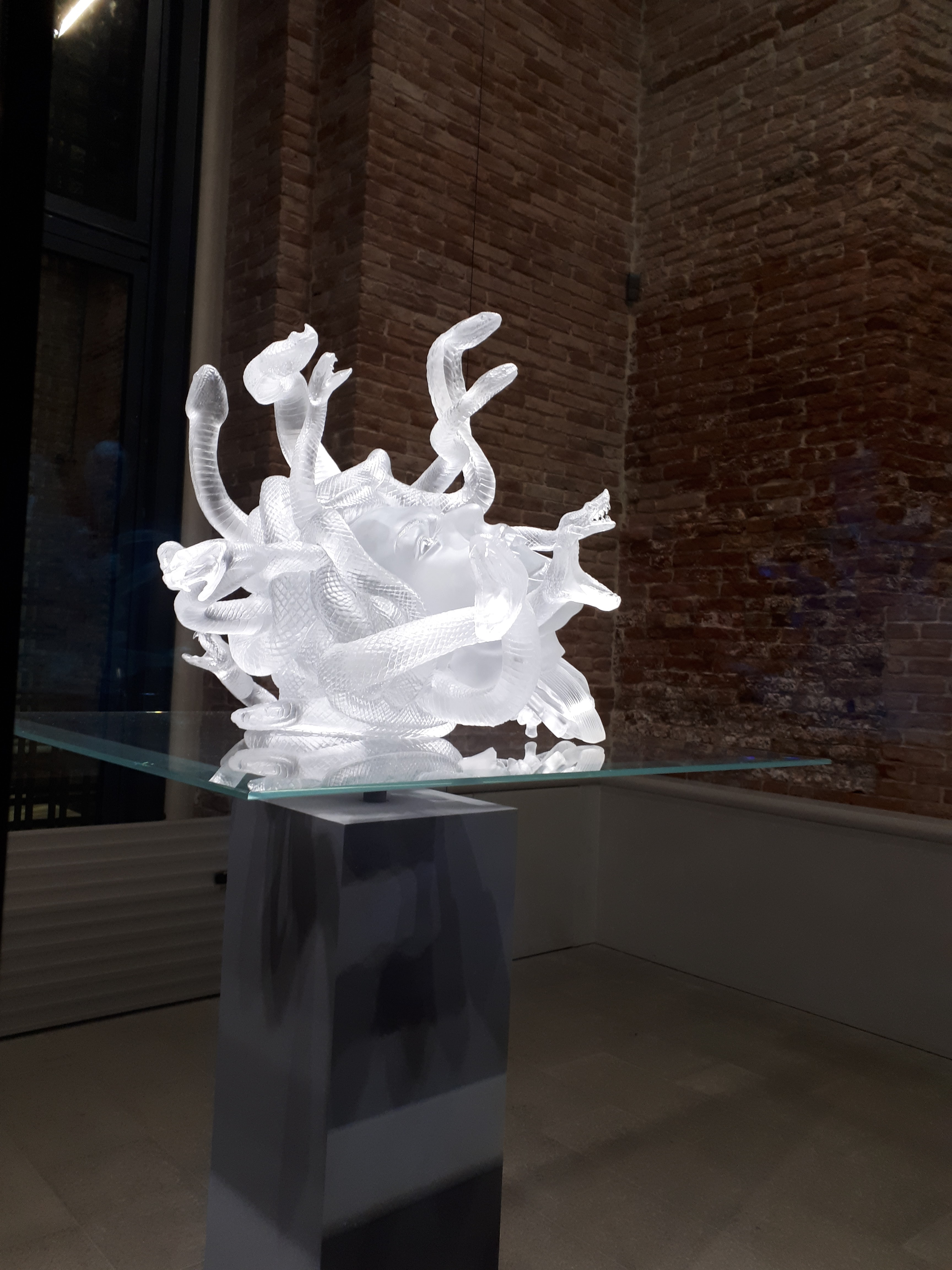
I’m mentioning the above piece for not only the design, but the material. Not many pieces in this exhibition were made of crystal glass, making this one seem all the more precious and fragile.
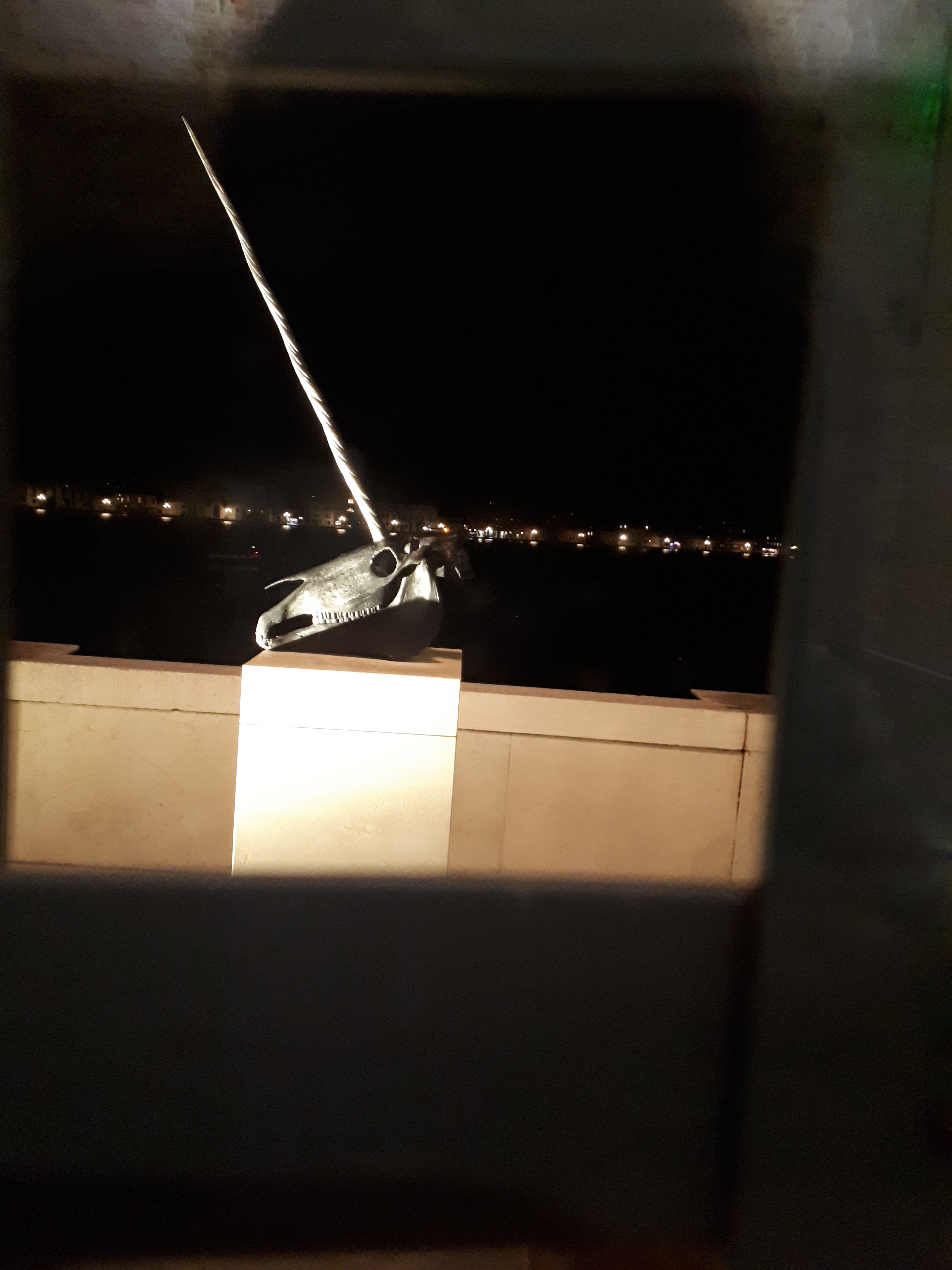

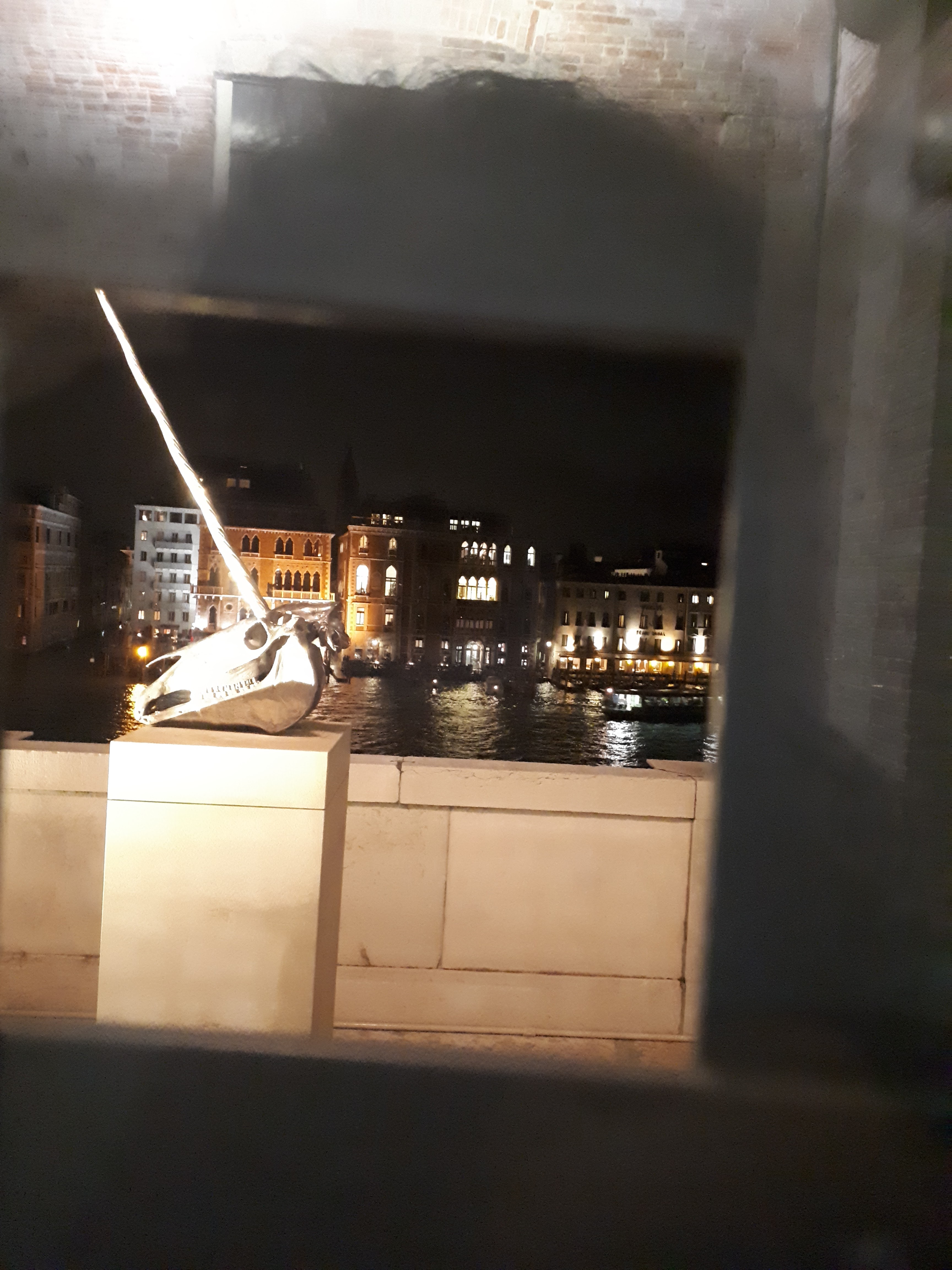
These three pieces were the last we found at the exhibition, displayed outside the tower of the Punta Della Dogana. All named ‘Skull of a Unicorn’, one made from bronze, one from silver and one from gold & silver. It was late and because of that and presumably the awful weather, the doors were locked so we couldn’t see the pieces up close – I took these photos through the glass in the doors. I’ve included these not only for the sculptures themselves, but the positioning of them. I love that they are ‘watching’ over the city, acting as spectacular display pieces to be looked upon with the architecture from the outside. The fact that we couldn’t approach them made them seem prestigious, although personally it felt like a tease; after an exhausting day of rushing to make sure we saw everything in the exhibition, this last spectacle could only be viewed through a door.
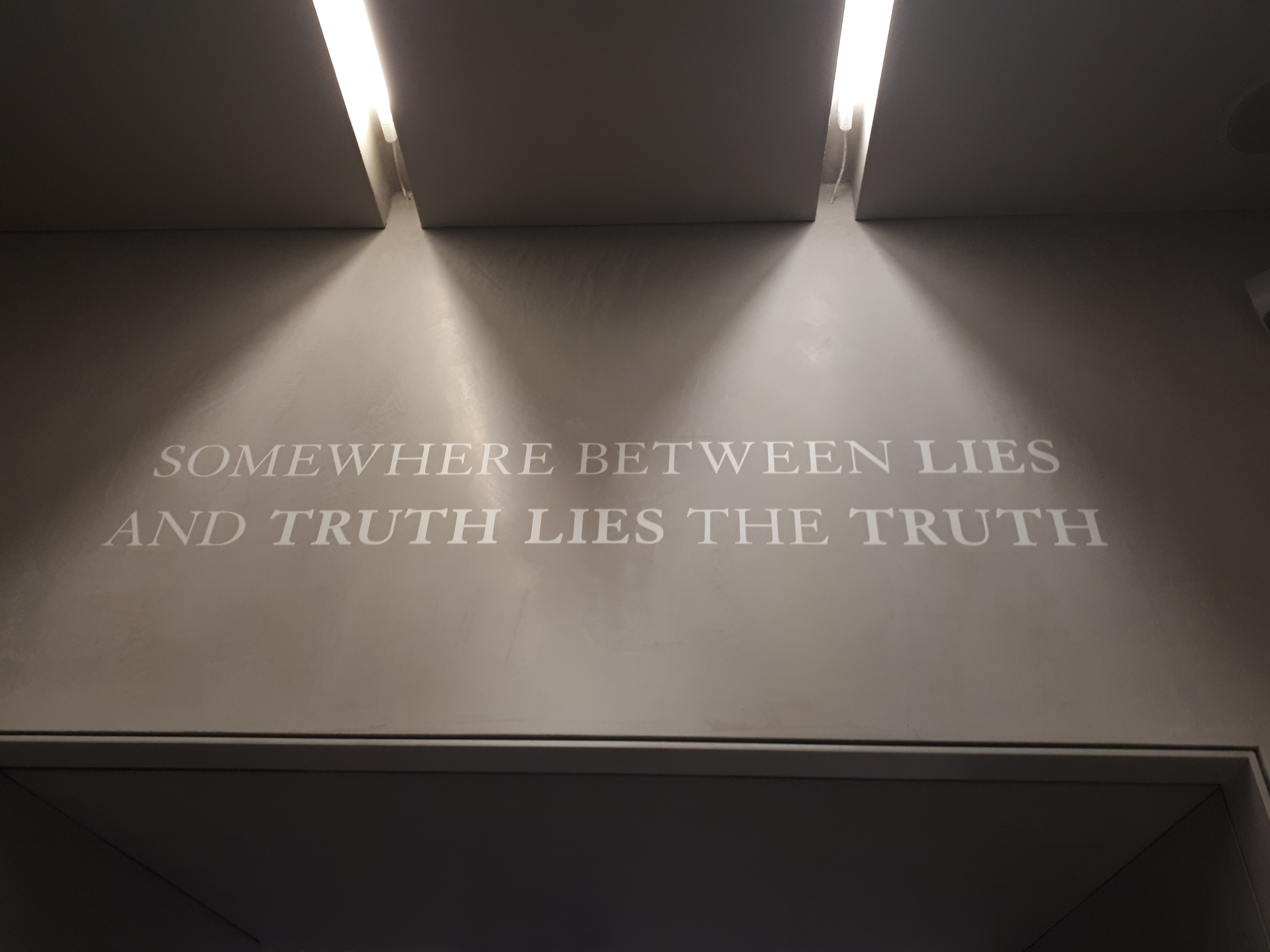
This exhibition as a whole blew me away. Perhaps because I had never seen an exhibition of this scale, across two buildings at different ends of the city. Or because of the sheer amount of work, all of which was linked through the same backstory as well as the visuals – bronze detail of corals, gold and silver treasures, and the whole underwater theme.
My artistic journey has involved working in great detail, then working through the realisation that detail does not always constitute a ‘good’ piece of work, and trying to understand where my skills as an artist can fit into the creative world. Damien Hirst’s ‘Treasures from the Wreck of the Unbelievable’ filled me with confidence that working in detail is not exclusive to photorealism, working on a large scale is not exclusive to abstraction or lack of detail, and small intricate pieces are not always overlooked or labelled as ‘underwhelming’.
Finally, the exhibition is something mystical. Some critics have condemned the exhibition, labelling it a ‘spectacular bloated folly’, and saying it is ‘an overblown, kitsch pastiche, characterised by lifeless surfaces, lurid emotions, and vile, excessive details’.
I completely disagree.
I feel that this review is ignoring the sheer beauty of the material use, as well as the artist’s blatant mockery of his own fabrication. It could be considered kitsch for the ironic misplacements of characters in the story’s ‘history’, but the fabrication is explored in so many ways and in such detail that I can only see it as ingenious. The story of this exhibition, the years that went into to creating the pieces, the submerging of so many of the sculptures beneath the ocean… the shipwreck ‘Unbelievable’ may not be real, but the story has come to life through the effort put into it’s invention. I may be seen as an ignorant art student for only screaming praise for what I have seen here, and not being able to find fault – but when faced with such beautiful detail, such a varied use of material, and the use of history and elemental research to give every piece context and meaning… I am totally inspired.

Leave a reply to Ellen Ball Art Cancel reply